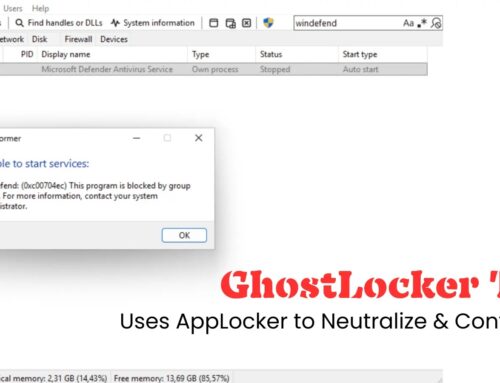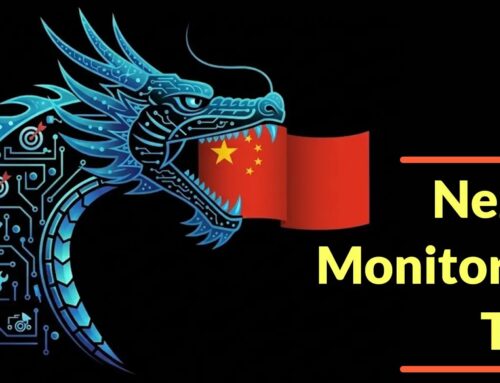
Surveillance Company Using SS7 Bypass Attack to Track the User’s Location Information
The pursuit of location intelligence has always been a high-stakes game. For state actors, intelligence agencies, and even private enterprises, knowing a target’s whereabouts can be the critical factor in operations or investigations. However, a recent and alarming development reveals a shadowy surveillance company leveraging a sophisticated SS7 bypass attack to pinpoint mobile phone users’ locations with unsettling precision. This isn’t just a theoretical threat; it’s a real-world exploitation that circumvents established security protocols and highlights critical vulnerabilities within global telecommunications infrastructure.
The SS7 Network: A Foundation Under Attack
The Signaling System No. 7 (SS7) is the backbone of most public switched telephone networks (PSTNs) and cellular networks worldwide. It’s the protocol suite that enables essential services like call setup, routing, SMS messaging, and number portability. Its inherent design, dating back decades, prioritized functionality and interoperability over robust security, making it a perennial target for attackers with the necessary access and expertise.
SS7 vulnerabilities are not new. Researchers have long demonstrated how the protocol can be manipulated to intercept calls, read SMS messages, and track location data. However, this newly detected attack represents an evolution, exploiting previously unknown vulnerabilities to achieve its objectives.
Unpacking the SS7 Bypass Attack Methodology
The core of this advanced attack lies within the TCAP (Transaction Capabilities Application Part) layer of SS7 networks. TCAP is responsible for handling non-call-related services, such as location updates and call forwarding. By manipulating TCAP messages, the surveillance company can bypass, or ‘trick,’ the network into revealing sensitive location information.
- Malformed SS7 Commands: The attackers are sending specially crafted, malformed SS7 commands. These commands are designed to appear legitimate enough to be processed by the network but contain subtle flaws or unexpected parameters.
- IMSI Masking: A critical element of this attack is the ability to mask the International Mobile Subscriber Identity (IMSI). The IMSI is a unique identifier for each mobile subscriber. By obscuring or manipulating this identifier, the attackers can effectively “spoof” the network into responding with location data without properly authenticating the querying entity. This circumvents standard security checks that would typically prevent unauthorized location requests.
- Leveraging Unknown TCAP Vulnerabilities: The most concerning aspect is the exploitation of what are described as “previously unknown vulnerabilities” within the TCAP layer. This suggests a zero-day or N-day exploit that mobile operators were previously unaware of, allowing the attackers to penetrate deeper into the network’s signaling logic. While a specific CVE has not yet been publicly assigned or disclosed for this particular exploitation, it underscores the continuous need for thorough security audits of legacy infrastructure.
Why Location Tracking is a Critical Threat
The ability to track an individual’s real-time location has profound implications:
- Privacy Invasion: It’s a direct assault on fundamental privacy rights, allowing surveillance without consent or legal oversight.
- Physical Security Risks: Knowing someone’s precise location can facilitate physical harm, stalking, or industrial espionage.
- State-Sponsored Surveillance: Such capabilities are invaluable to intelligence agencies or authoritarian regimes seeking to monitor dissidents, journalists, or political opponents.
- Economic Espionage: Tracking key personnel from competitors could provide insights into business dealings or travel patterns, offering an unfair advantage.
Remediation Actions for Mobile Network Operators (MNOs)
Addressing this sophisticated SS7 bypass attack requires a multi-faceted approach from mobile network operators. Given the nature of SS7, a complete overhaul is impractical, but significant mitigations are possible.
- Robust SS7 Firewall Implementation: MNOs must deploy and continuously update advanced SS7 firewalls. These firewalls should analyze signaling traffic for anomalous patterns, malformed messages, and unauthorized queries, specifically focusing on TCAP messages. Implement granular filtering rules based on message type, originating network, and destination.
- Traffic Monitoring and Anomaly Detection: Implement deep packet inspection (DPI) and anomaly detection systems specifically tailored for SS7 traffic. Look for unusual message sequences, high volumes of specific message types from unexpected sources, or attempts to mask IMSIs. Leveraging AI/ML-driven analytics can help identify patterns indicative of advanced attacks.
- Regular SS7 Vulnerability Assessments and Penetration Testing: Conduct frequent, specialized penetration tests targeting SS7 interfaces. These assessments should mimic known and emerging attack techniques, including TCAP manipulation and IMSI masking attempts.
- Enforce Blacklisting and Whitelisting: Maintain strict blacklists for known malicious Global Title (GT) addresses and white-lists for authorized signaling partners. Any traffic from unauthorized GTs attempting to initiate location-related TCAP queries should be immediately blocked.
- Collaborate with Threat Intelligence: Actively participate in intelligence sharing forums and work with cybersecurity vendors specializing in telecommunications security to stay informed about new SS7 vulnerabilities and attack vectors.
- Network Architecture Review: Review and segment the SS7 network where possible, limiting access to critical components and ensuring that only necessary signaling relationships are established.
Tools for SS7 Security Analysis and Mitigation
Specialized tools are crucial for MNOs to detect, analyze, and mitigate SS7 vulnerabilities.
| Tool Name | Purpose | Link |
|---|---|---|
| NetNumber Universal Signaling Firewall | Comprehensive SS7/Diameter threat intelligence and firewalling. | Link to NetNumber Example |
| Signs SS7 Firewall | SS7 firewall with advanced anomaly detection and filtering. | Link to Signs Example |
| P1 Security (Signaling Firewall & Analytics) | SS7/Diameter security suite with testing and monitoring. | Link to P1 Security Example |
| Wireshark with SS7 Dissectors | Network protocol analyzer for deep inspection of SS7 traffic during analysis. | https://www.wireshark.org/ |
Conclusion: The Evolving Threat Landscape
The discovery of a surveillance company leveraging an SS7 bypass attack to track user locations underscores a critical reality: the telecommunications infrastructure, despite its robust nature, remains susceptible to sophisticated exploits. The use of previously unknown TCAP vulnerabilities and IMSI masking techniques represents a significant escalation in offensive capabilities. For mobile network operators, this is a stark reminder to move beyond generic security measures. Proactive, specialized SS7 security firewalls, continuous traffic analysis with anomaly detection, and regular vulnerability assessments are no longer optional; they are essential defenses against persistent and evolving threats to user privacy and network integrity.





